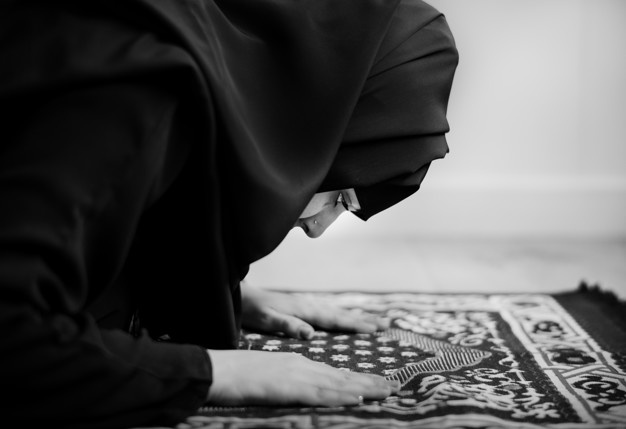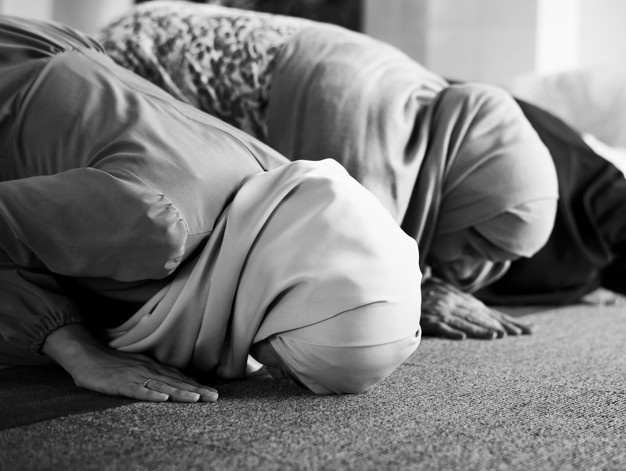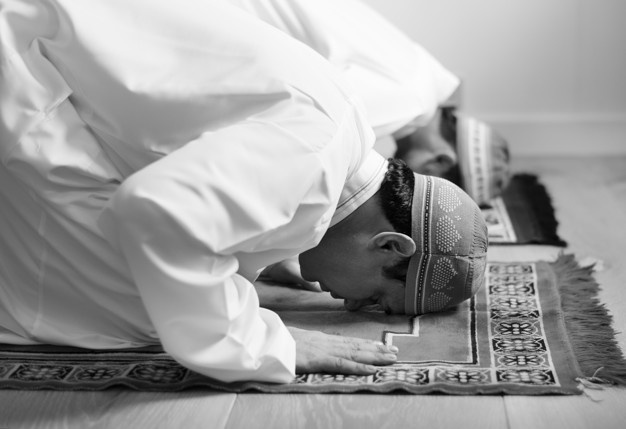8 Benefits of Rhythm Gymnastics for Body Health, Suitable for Doing During a Diet
As the name suggests, rhythm gymnastics is a gymnastics that is performed with musical accompaniment. Here are some benefits of rhythm gymnastics for body health.

Kapanlagi.com - The recommendation of prostration in Islam has indeed been commanded by Allah SWT. Prostration itself is one of the obligatory parts of the prayer movement. This movement is performed with the forehead, both palms, both knees, and the tips of the toes touching the prayer mat. This is also in accordance with the saying of the Prophet Muhammad SAW.
"I was commanded (by Allah) to prostrate on seven parts, on the forehead and indicated with his hand on his nose, and two hands and two knees and the tips of the toes of both feet." (Hadith Muttafaqun Alaih)".
In addition, the prostration movement also has the meaning of acknowledging that humans are creatures created by God and humans are helpless before the Creator. Performing prostration is also the same as being earnest in worship and seeking help.
In addition to prostration used as a prayer movement, there are various types of prostration in the Islamic religion that you need to know based on their respective functions. By knowing the various types of prostration, you can also perform prostration properly and correctly. Summarized from several sources, the following are the various types of prostration in Islam that you need to know.

(credit: freepik)
Prostration that is continuously performed by Muslims is prostration in prayer. Yes, this prostration is commonly used when performing the five daily prayers. This prostration movement becomes one of the pillars of prayer that must be fulfilled. Because if it is not done, the prayer is not valid. When prostrating in prayer, it is recommended to recite the following phrase three times:
Subhana robbiyal a'la wabihamdihi
Meaning: Glorified is Allah, the Most High, and all praise is due to Him.
In addition, the supplication recited during prostration elevates the Greatness of Allah, who has bestowed all praise upon Him.

(credit: freepik)
Furthermore, the various types of prostration that you need to know include prostration for forgetfulness. This prostration is performed by someone when they are performing the prayer and then they forget or doubt the recitation, movement, or number of prayer units they are performing. The word Sahwi (sahwun) in Arabic also means forgetfulness, negligence, or carelessness.
This can happen because someone who is praying is not concentrating enough, causing them to forget. That is why it is recommended to perform prostration for forgetfulness. Although it is a recommended act, it is better for you to do it before the salutation or after the salutation. In addition, prostration for forgetfulness can also be done when performing congregational prayer.
When performing prostration for forgetfulness, the following is the supplication:
Subhana man laa yanaamu wa laa yas-huw
Meaning: Glorified is Allah, who never sleeps and never forgets.

(credit: freepik)
Sujud tilawah is the next prostration that you need to know. Sujud tilawah is performed by someone when they are reading or listening to the recitation of the Quran and there is a verse of prostration. The verse of prostration is a specific verse in the Quran that, when recited, it is recommended to perform sujud tilawah.
It is also important to note that when we are praying in congregation and the imam reaches this verse of prostration and performs sujud tilawah, the followers (makmum) should also follow suit and perform sujud. However, if the imam recites the verse of prostration but does not perform sujud, then the followers are not allowed to perform sujud.
Here is the prayer recitation when performing sujud tilawah:
Sajada wajhi lilladzi kholaqohu, wa showwarohu, wa syaqqo sam'ahu, wa bashorohu bi khaulihi wa kuuwatihi fatabarakallahu ahsanul kholiqiin.
Meaning: My face prostrates to the Creator, who created it, formed it, and gave it hearing and sight. Blessed is Allah, the best of creators". (HR. Ahmad, Abu Dawud, Hakim, Tirmidzi, and Nasa'i).

(credit: freepik)
Various types of prostration, the last one being prostration of gratitude. As the name suggests, prostration of gratitude is performed when someone expresses gratitude to Allah SWT for the extraordinary blessings bestowed upon them. By performing prostration of gratitude, one will also realize the magnitude of the blessings bestowed by Allah SWT.
When you are relieved or saved from calamity, or when you receive great blessings, it is advisable to perform prostration of gratitude while reciting the following prostration of gratitude prayer:
Subhaanallah walhamdulillah, walaa ilahaillallah wallahuakbar. Walaa haula wala quwata ilabillahil aliyyil adzim
Meaning: Glory be to Allah and all praise is for Allah, there is no god but Allah. Allah is the greatest and there is no power or might except with Allah, the Most High and the Most Great.
Those are the various types of prostration in Islam that you need to know in order to enhance your devotion to the Creator. May it be beneficial.
(kpl/dtm)
Cobain For You Page (FYP) Yang kamu suka ada di sini,
lihat isinya
As the name suggests, rhythm gymnastics is a gymnastics that is performed with musical accompaniment. Here are some benefits of rhythm gymnastics for body health.
The cause of muscle cramps often occurs due to various factors that are not realized. This condition generally causes pain, tension, and stiffness, especially in the area around the feet or hands.
In Islam, there are several sunnah prayers that are performed outside of the obligatory prayers. Although classified as sunnah prayers, there are many benefits that you can get when performing them. So it's a pity if you miss them. Here are various types of sunnah prayers.
Productive cough is one of the cough complaints that can affect anyone. The cause of productive cough is due to various factors that cause mucus or phlegm.
Online learning is a term that is frequently mentioned lately. Online learning is short for "in-network" or equivalent to the term "online" in English. What is the complete explanation?
Traditional wet cakes are still quite popular and have many enthusiasts. The delicious and tasty flavors successfully spoil the taste buds of its consumers. Here are some types of traditional wet cakes in Indonesia that are most loved. What are they?
The term 'masuk angin' is very familiar to the people of the homeland, which is associated with certain health problems. However, the cause of 'masuk angin' can occur due to several common factors.
UKT is a payment system for higher education fees. How is it explained?
The cause of dark lips can occur due to factors that many people are unaware of. Although it may seem simple, this condition has a significant impact on the beauty and health of the lips.
Advertisements should not only be informative but also attractive. Therefore, the elements of advertising must be fulfilled. What is the explanation?
In Islam itself, impurities are classified into several categories according to their level. Such as mukhaffafah impurities or light impurities, mutawassithah impurities or moderate impurities, and mughalladhah impurities or heavy impurities.
These are some of the benefits of meditation for the health of the body and how to do it. What are the benefits? Let's check it out KLovers.